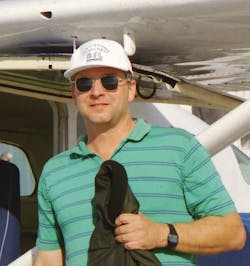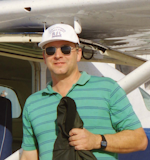Technical Tip: Listen Closely; Persistence Pays Off
With all the pulleys, bearings, fairleads, etc., flight control systems have, the task of locating one or two misbehaving components can be assisted by simply listening and feeling the system as you operate it. Wings and fuselages are fairly good echo chambers that pass noises pretty well, which gives us one effective means of locating worn/bad components. Validating or backing up your inspection is to take a moment, once before the work begins and again after everything is done, to slowly move the surfaces through their travel while intently listening and feeling the surfaces through your fingertips.
I found a misrouted aileron cable while doing this on a freshly repaired Cessna 206. The right aileron cable had been routed through a lightning hole rather than the cable routing hole in the rib; the resulting rubbing was caught because a slight sawing sound could be heard when the ailerons were moved and the condition was caught early before damage could occur to the structure.
A recent example was found during a progressive inspection. While slowly moving the ailerons during the phase inspection, a very slight roughness almost eluded detection. A second, slightly quicker movement caused a little vibration to be noticed toward the end of the aileron travel. The mechanic now waited a moment for surrounding noises to quit and tried it again. There … a slight grinding noise or something. He had another person slowly move the Lear’s aileron in another quiet time and heard it coming from over by the right aileron. Now homing in, the once-barely noticeable grinding and roughness revealed itself in a bearing with a little reddish, rust-colored stain. Persistence paid off. If it seems weird, it probably is.
Clint Lowe holds an FAA Airframe and Powerplant certificate with Inspection Authorization and a Commercial Pilot certificate with instrument and multi engine ratings. Clint has spent most of his aviation career with the United States Air Force and Air National Guard in a variety of roles including maintenance, safety, training, oversight, and accident investigation. In 2007 he received the Maintenance Group Senior NCO of the Year award. He currently is a quality assurance inspector/quality assurance representative with the North Dakota Air National Guard in Fargo, ND.


